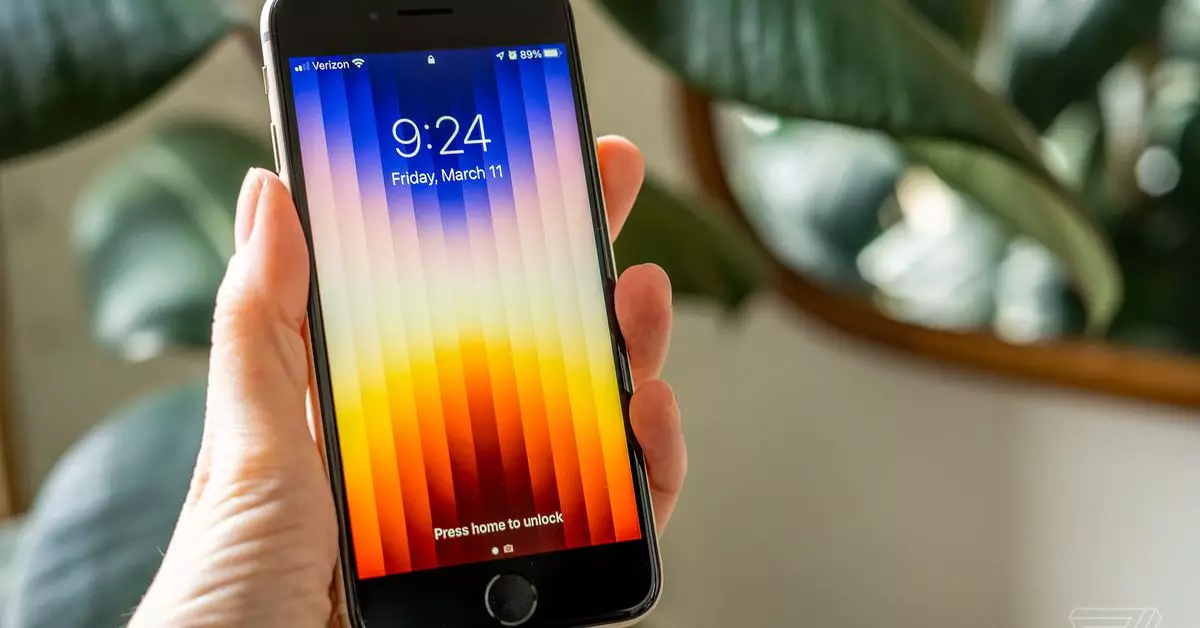In the rapidly evolving mobile technology market, the balancing act between quality and pricing has forwarded a notable debate: does Apple genuinely cater to midrange consumers? While Apple is known for its premium offerings, the iPhone SE has historically struggled in comparison to many excellent midrange Android options—capturing consumers may depend on Apple’s willingness to innovate in this realm.
Allison Johnson’s critique of the iPhone SE illustrates a compelling narrative. Released first in 2016, the iPhone SE combined an old design with a contemporary A9 chip, attracting budget-conscious consumers seeking the Apple logo alongside a competitive price point of $399. The intention was clear: deliver functional performance in a more affordable package. Unfortunately, as technology surged ahead, the limitations of the iPhone SE began to emerge glaringly.
Currently priced at $429, while maintaining an air of reliability with features like water and dust resistance, the SE brings with it compromises that can deter prospective buyers. The outdated LCD screen and limited storage of only 64GB strike a stark contrast against the vivid OLED displays found in rival devices. More critically, Apple’s decision to forgo a night mode in the camera renders the SE relatively ineffectual in low-light situations. For those who prioritize photography, these limitations are glaring and frustrating. In a world where smartphones double as primary cameras, the absence of basic features often feels like a grave omission.
As the iPhone SE navigates these murky waters of midrange appeal, Android has evolved significantly. Models like the Google Pixel 8A, showcasing impeccable specifications, begin at $499 and come packed with features belittling the SE’s offerings. With a modern OLED screen, IP67 rating, and a robust camera poised for every lighting condition, the Pixel presents a strong argument for consumers unwilling to sacrifice quality for brand loyalty. Likewise, Samsung’s Galaxy line offers compelling alternatives, such as the Galaxy A35, exemplifying the capabilities that make Apple’s most affordable phone look like a relic.
The Android ecosystem not only provides value; it also embraces consumer choice and variety that Apple’s offerings currently lack. As midrange phones become increasingly desirable, Apple must confront the landscape of modern consumer expectations. When people have better options at similar price points, the allure of the Apple brand alone may not be sufficient to retain consumers.
Amidst the critiques, there exists a glimmer of hope for the iPhone SE’s future, especially with impending rumors of a fourth-gen release scheduled for 2025. Such a model could finally bring advancements that consumers have awaited: an OLED screen, a reduction in bezels, enhanced storage options, and improved processing capabilities. Should the expected price remain reasonable—even if it climbs to $499—the iPhone SE could very well reclaim its position in the lucrative midrange market.
One of the pivotal aspects steering a successful redesign would be Apple’s inclination to streamline its features. Aiming for a more focused approach—eliminating excess elements and concentrating on core functionalities—could better align with the demands of midrange consumers. While advanced features like the dynamic island or multiple camera setups cater to tech enthusiasts, many buyers prioritize simplicity, value, and efficiency.
A revealing point in this discourse is a comparison to Apple’s Mac Mini. As highlighted by Chris Welch, the M4-powered version of the device exemplifies value and functionality. By constructing a computer stripped to essentials but proving efficient and powerful, Apple has demonstrated that it can understand and cater to a broader market. This model could serve as a template for a revamped iPhone SE, delivering necessary features without surplus costs.
As Apple looks toward future iterations, the iterative, cost-effective strategy seen in the Mac Mini should influence how the company approaches the SE. The tech giant can craft a phone that resonates with value-seeking consumers while showcasing what the Apple ecosystem has to offer—elevating the midrange offering to meet 2025’s standards without alienating die-hard fans or budget-conscious new users.
The evolution of the midrange smartphone market puts Apple in a vulnerable position: the once-beloved iPhone SE now battles to remain relevant, overshadowed by Android competitors offering pizzazz at a competitive price. Financial trends indicate a shift towards more premium models, arguably stemming from a lack of true midrange choices.
For Apple to revitalize the iPhone SE, it must tap into the lessons learned from successful releases like the Mac Mini and consider strategies that emphasize value and adaptability. As the smartphone market continually shifts, the need for choice and quality remains paramount; the fourth-gen iPhone SE must aspire to deliver on both counts to reclaim its status in an increasingly crowded field. The potential is immense—the question remains: will Apple seize the moment?


Leave a Reply